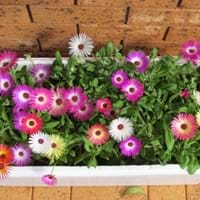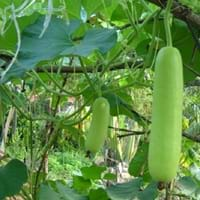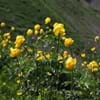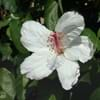Life Span
Annual
Annual and Biennials
Type
Flowering Plants
Vegetable
Origin
South Africa
India, Philippines, Southeast Asia
Types
it is a type of daisy
Not Available
Habitat
Humid climates, Warmer regions
Moist Soils, Tropical Climate
USDA Hardiness Zone
Not Available
5-7
Sunset Zone
A2, 1a, 1b, 2a, 2b, 3a, 3b, 4, 5, 6, 7, 8, 9, 10, 11, 12, 13, 14, 15, 16, 17, 18, 19, 20, 21, 22, 23, 24
A1, A2, A3, H1, H2, 1a, 1b, 2a, 2b, 3a, 3b, 4, 5, 6, 7, 8, 9, 10, 11, 12, 13, 14, 15, 16, 17, 18, 19, 20, 21, 22, 23, 24
Habit
Prostrate/Trailing
Vining/Climbing
Flower Color
Red
Yellow, Orange, Dark Green
Flower Color Modifier
Bicolor
Bicolor
Fruit Color
Brown
Yellow, Dark Green
Leaf Color in Spring
White, Lime Green, Ivory
Green, Dark Green
Leaf Color in Summer
White, Lime Green, Ivory
Green, Dark Green
Leaf Color in Fall
White, Lime Green, Ivory
Green, Dark Green
Leaf Color in Winter
Light Green
Not Available
Leaf Shape
Long Linear
Palmate
Plant Season
Spring, Summer, Fall, Winter
Summer, Fall
Sunlight
Full Sun, Partial Sun, Partial shade
Full Sun
Growth Rate
Fast
Very Fast
Type of Soil
Loam, Sand
Loam, Sand
The pH of Soil
Acidic, Neutral, Alkaline
Neutral
Soil Drainage
Well drained
Well drained
Bloom Time
Spring, Late Spring, Early Summer, Early Fall, Fall, Late Fall, Early Winter
Indeterminate
Tolerances
Drought
Drought
Where to Plant?
Container, Ground, Pot
Ground
How to Plant?
Seedlings
Seedlings
Plant Maintenance
Medium
Medium
Watering Requirements
Requires regular watering
Requires watering in the growing season, water on alternate days
In Summer
Ample Water
Lots of watering
In Spring
Average Water
Moderate
In Winter
Average Water, Ample Water
Average Water
Soil pH
Neutral, Slightly Acidic
Neutral
Soil Type
Loam, Sand
Loam, Sand
Soil Drainage Capacity
Well drained
Well drained
Sun Exposure
Full Sun, Partial shade, Partial Sun
Full Sun
Pruning
No pruning needed
Cut out old flower stalks, Prune after flowering, Remove branches that rub together, Remove dead or diseased plant parts
Fertilizers
All-Purpose Liquid Fertilizer
High potassium diluted feed of 5-10-5, Nitrogen, Potassium
Pests and Diseases
Not Available
Army-worms, Bacteria wilt, Bacterial leaf spot, Blight, Cucumber beetles, Cutworms, Fusarium leaf spot, Leaf rust, Red spider mite, Striped cucumber beetles
Plant Tolerance
Drought
Full Sun, Salt and Soil Compaction, Shallow soil
Flower Petal Number
Single
Single
Foliage Texture
Medium
Coarse
Foliage Sheen
Glossy
Matte
Attracts
Not Available
Bees, Flies, Flying insects
Allergy
Not Available
Hypoglycaemic Coma, Irregular Heart Rhythm
Aesthetic Uses
Beautification, Showy Purposes
Decorating walls, Ornamental use
Beauty Benefits
Not Available
Anti-ageing, Making cosmetics
Environmental Uses
Air purification
Food for animals, Insect Repellent
Medicinal Uses
No Medicinal Use
Anti-fungal, Blood disorders, Culinary Usage, Diabetes, Gastrointestinal disorders, Laxative, Nutritive, Weight loss
Part of Plant Used
Flowers
Fruits
Other Uses
Used as Ornamental plant
Cosmetics, Culinary use, Repellent, Used in making musical instruments
Used As Indoor Plant
No
No
Used As Outdoor Plant
Yes
Yes
Garden Design
Bedding Plant, Groundcover
Dried Flower/Everlasting, Vine
Botanical Name
DOROTHEANTHUS bellidiformis
Lagenaria siceraria
Common Name
Livingstone Daisy, Mezoo Trailing Red Livingstone Daisy
calabash, bottle gourd, white-flowered gourd, opo squash
In Hindi
Livingstone Daisy
लौकी
In German
Livingstone Daisy
Flaschenkürbis
In French
Livingstone daisy
Lagenaria siceraria
In Spanish
Livingstone daisy
Lagenaria siceraria
In Greek
Λίβινγκστον μαργαρίτα
Τσότρα
In Portuguese
Livingstone daisy
Cabaça
In Polish
Livingstone daisy
Tykwa pospolita
In Latin
Livingstone primula
utrem cucurbita
Phylum
Not Available
Magnoliophyta
Class
Not Available
Magnoliopsida
Order
Caryophyllales
Cucurbitales
Family
Aizoaceae
Cucurbitaceae
Genus
Dorotheanthus
Coccinia
Clade
Angiosperms, Core eudicots, Eudicots
Angiosperms, Eudicots, Rosids
Tribe
Not Available
Not Available
Subfamily
Ruschioideae
Papilionoideae
Number of Species
Not Available
Season and Care of Livingstone Daisy and Bottle Gourd
Season and care of Livingstone Daisy and Bottle Gourd is important to know. While considering everything about Livingstone Daisy and Bottle Gourd Care, growing season is an essential factor. Livingstone Daisy season is Spring, Summer, Fall and Winter and Bottle Gourd season is Spring, Summer, Fall and Winter. The type of soil for Livingstone Daisy is Loam, Sand and for Bottle Gourd is Loam, Sand while the PH of soil for Livingstone Daisy is Acidic, Neutral, Alkaline and for Bottle Gourd is Neutral.
Livingstone Daisy and Bottle Gourd Physical Information
Livingstone Daisy and Bottle Gourd physical information is very important for comparison. Livingstone Daisy height is 20.30 cm and width 25.40 cm whereas Bottle Gourd height is 60.00 cm and width 90.00 cm. The color specification of Livingstone Daisy and Bottle Gourd are as follows:
Livingstone Daisy flower color: Red
Livingstone Daisy leaf color: White, Lime Green and Ivory
Bottle Gourd flower color: Yellow, Orange and Dark Green
- Bottle Gourd leaf color: Green, Dark Green
Care of Livingstone Daisy and Bottle Gourd
Care of Livingstone Daisy and Bottle Gourd include pruning, fertilizers, watering etc. Livingstone Daisy pruning is done No pruning needed and Bottle Gourd pruning is done Cut out old flower stalks, Prune after flowering, Remove branches that rub together and Remove dead or diseased plant parts. In summer Livingstone Daisy needs Ample Water and in winter, it needs Average Water, Ample Water. Whereas, in summer Bottle Gourd needs Lots of watering and in winter, it needs Average Water.





